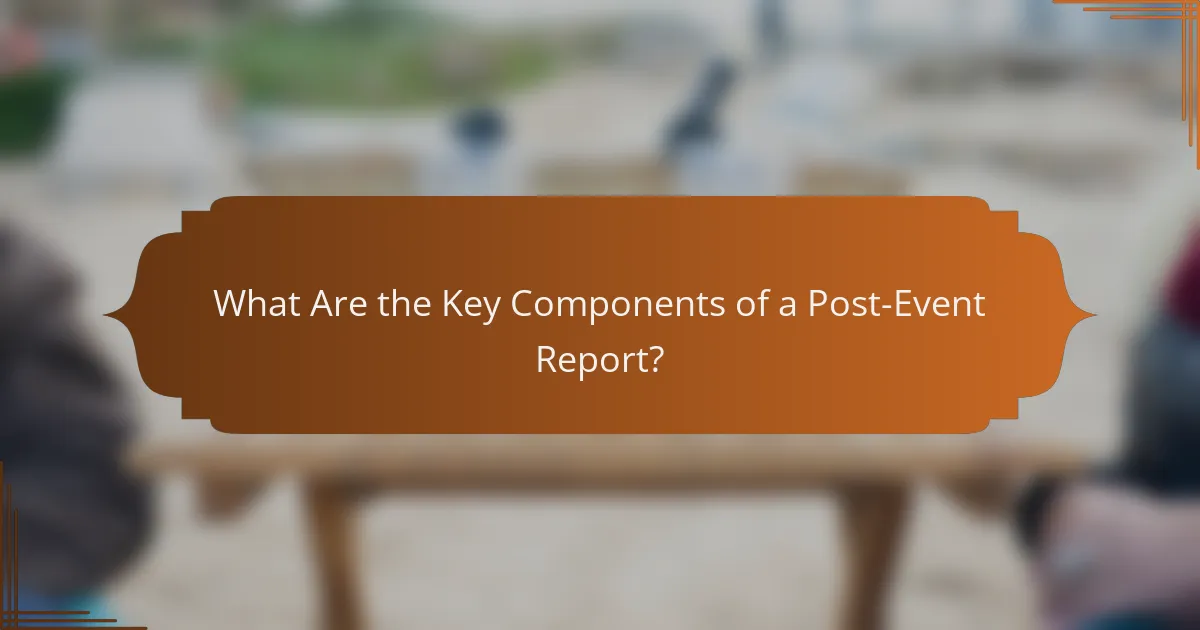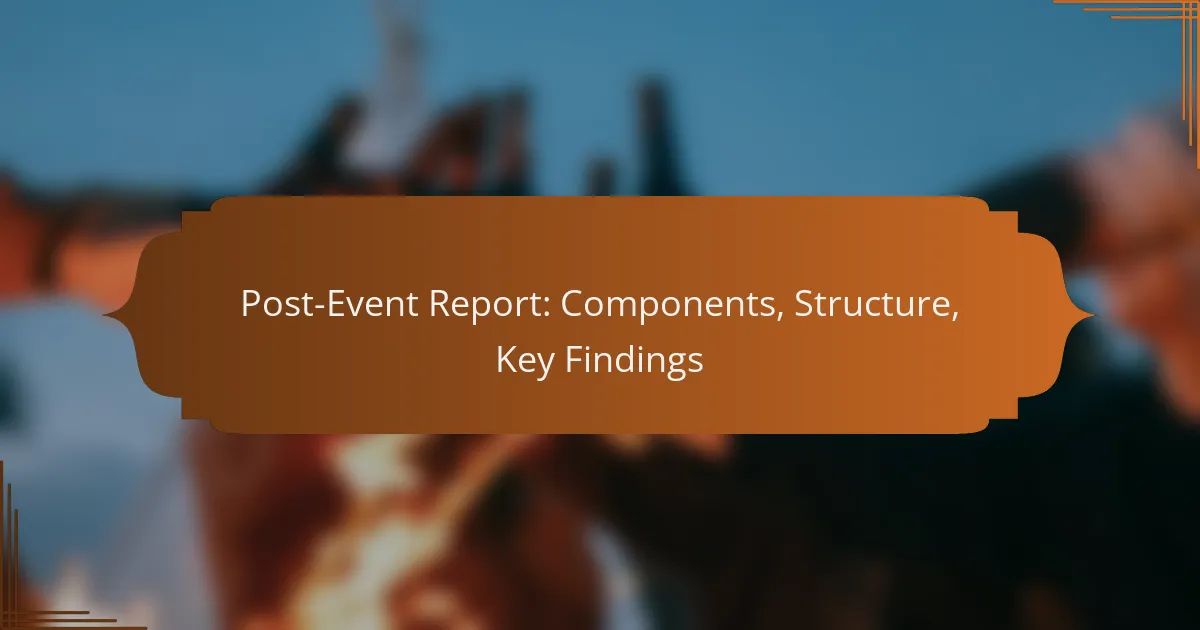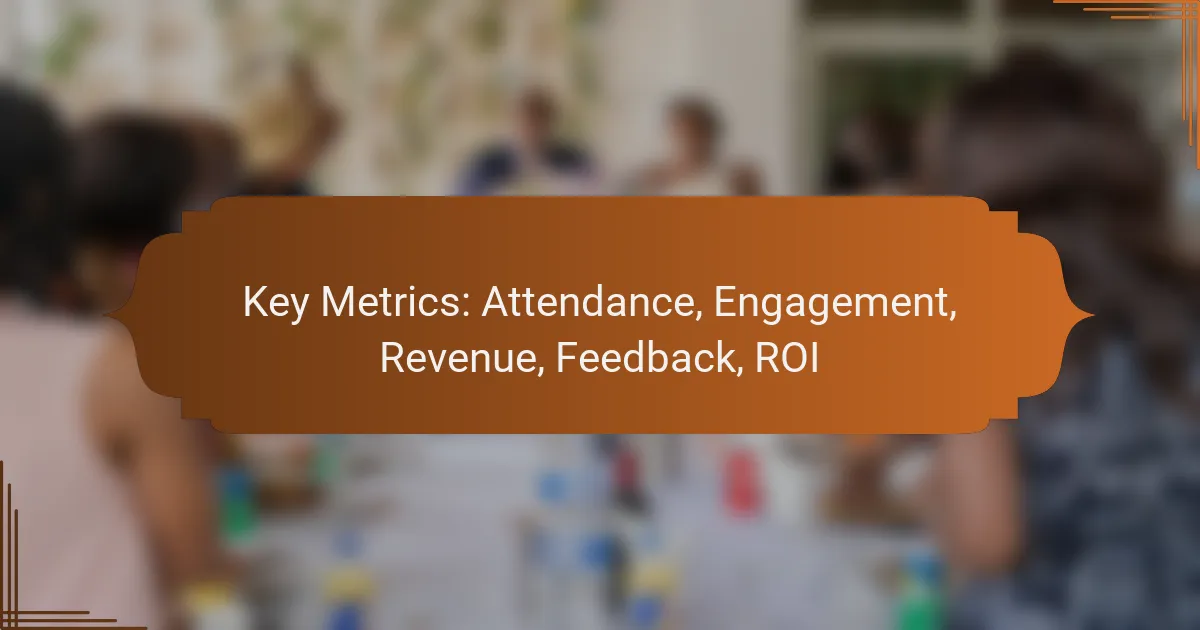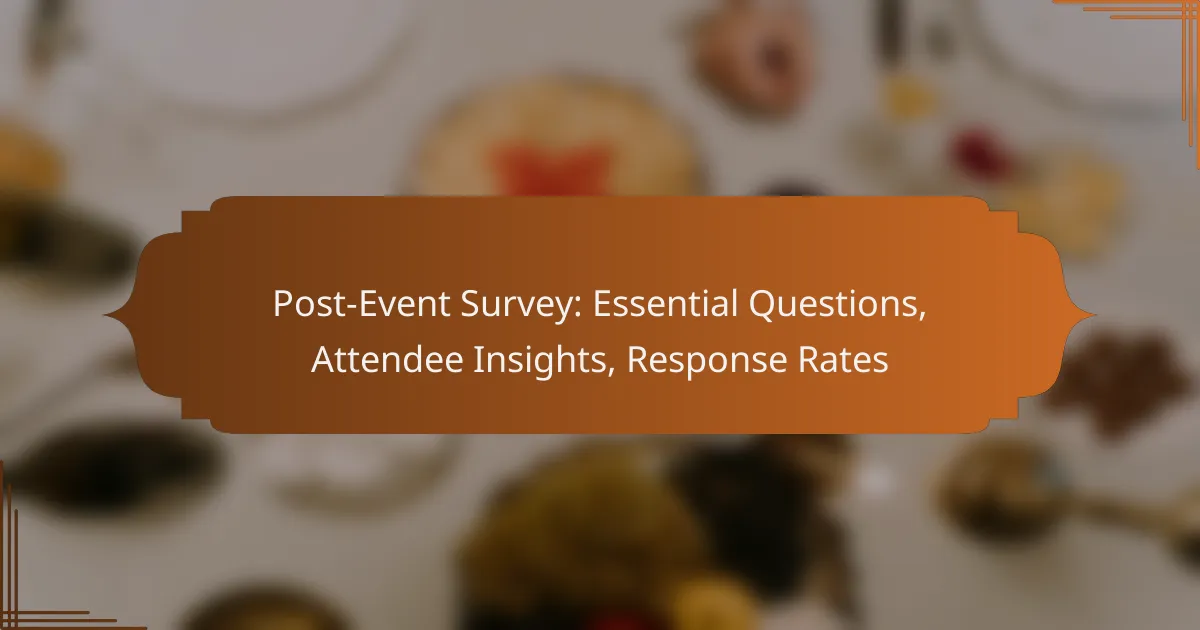A post-event report serves as a crucial tool for evaluating the outcomes of an event, offering a structured analysis of its effectiveness and areas for enhancement. It typically includes an executive summary, event overview, detailed data analysis, and actionable recommendations, ensuring stakeholders gain valuable insights. By focusing on key findings such as attendee feedback and engagement metrics, the report highlights the event’s overall impact and guides future planning efforts.

What Are the Key Components of a Post-Event Report?
A post-event report typically includes several essential components that summarize the event’s outcomes, analyze data, and provide actionable insights. Key components include an executive summary, an overview of the event, a detailed data analysis, recommendations for future events, and appendices for supporting materials.
Executive Summary
The executive summary provides a concise overview of the post-event report, highlighting the main findings and recommendations. It should be brief yet informative, allowing stakeholders to quickly grasp the event’s impact and key takeaways.
Focus on the most significant outcomes, such as attendance figures, participant feedback, and any notable successes or challenges encountered during the event.
Event Overview
The event overview outlines the basic details of the event, including its purpose, date, location, and target audience. This section sets the context for the report and helps readers understand the event’s goals and objectives.
Include information on the event format, such as whether it was in-person, virtual, or hybrid, and any key speakers or activities that took place.
Data Analysis
Data analysis involves examining quantitative and qualitative data collected during the event. This may include attendance statistics, participant demographics, and feedback surveys.
Utilize charts or tables to present data clearly, and highlight trends or patterns that emerged. For example, if feedback indicates a high satisfaction rate, specify the percentage of positive responses to key questions.
Recommendations
The recommendations section offers actionable insights based on the data analysis. Provide specific suggestions for improving future events, such as enhancing marketing strategies, adjusting the event format, or addressing common attendee concerns.
Consider using bullet points for clarity, and prioritize recommendations based on their potential impact and feasibility.
Appendices
Appendices include supplementary materials that support the main report, such as detailed survey results, financial summaries, or promotional materials. This section allows interested readers to delve deeper into specific aspects of the event.
Ensure that all appendices are clearly labeled and referenced within the main body of the report for easy navigation.

How to Structure a Post-Event Report?
A well-structured post-event report clearly outlines the event’s objectives, methodologies, findings, and conclusions. This organization helps stakeholders understand the event’s impact and areas for improvement.
Introduction Section
The introduction section sets the stage for the report by summarizing the event’s purpose, date, location, and key participants. It should provide a brief overview of what the report will cover and the significance of the event.
For example, if the event was a conference, include details about the theme, the number of attendees, and notable speakers. This context helps readers grasp the report’s relevance right away.
Methodology Section
The methodology section describes how data was collected and analyzed during the event. This may include surveys, interviews, or observational techniques used to gather feedback from participants.
Clearly outline the tools and techniques employed, such as online survey platforms or in-person interviews, and specify the sample size. This transparency enhances the report’s credibility.
Findings Section
The findings section presents the results of the data analysis, highlighting key insights and trends. Use bullet points or tables to summarize significant data points for clarity.
- Participant satisfaction ratings
- Engagement levels during sessions
- Suggestions for future events
Include qualitative feedback alongside quantitative data to provide a comprehensive view of the event’s success and areas needing attention.
Conclusion Section
The conclusion section synthesizes the findings and offers actionable recommendations based on the results. Summarize the main takeaways and suggest improvements for future events.
For instance, if feedback indicated low engagement in certain sessions, recommend adjusting the format or content for next time. This section should empower stakeholders to make informed decisions moving forward.

What Are the Key Findings to Include?
Key findings in a post-event report should encompass attendee feedback, engagement metrics, budget analysis, and ROI assessment. These components provide a comprehensive overview of the event’s success and areas for improvement.
Attendee Feedback
Attendee feedback is crucial for understanding participant satisfaction and areas needing enhancement. Collect qualitative and quantitative data through surveys, interviews, or feedback forms immediately after the event.
Focus on key aspects such as content relevance, speaker effectiveness, and overall experience. Aim for a response rate of at least 30% to ensure the feedback is representative.
Engagement Metrics
Engagement metrics measure how actively participants interacted with the event content. This can include session attendance rates, participation in Q&A sessions, and social media activity related to the event.
Track metrics like the number of questions asked, poll participation rates, and social media mentions. A good benchmark is to aim for at least 50% of attendees engaging in some form of interaction.
Budget Analysis
Budget analysis involves reviewing the event’s financial performance against the planned budget. This includes a breakdown of expenses such as venue costs, catering, and marketing.
Compare actual spending to the budgeted amounts to identify variances. A common practice is to categorize expenses into fixed and variable costs to better understand where adjustments may be needed for future events.
ROI Assessment
ROI assessment evaluates the financial return on investment from the event. Calculate ROI by comparing the total revenue generated against the total costs incurred.
A typical formula is: (Total Revenue – Total Costs) / Total Costs x 100. Aim for an ROI of at least 20% to indicate a successful event. Consider both tangible and intangible benefits, such as brand exposure and networking opportunities, in your assessment.

How to Analyze Data for Insights?
Analyzing data for insights involves systematically examining collected information to uncover patterns, trends, and actionable conclusions. This process is essential for making informed decisions based on the data gathered during an event.
Quantitative Analysis Techniques
Quantitative analysis focuses on numerical data to identify trends and measure outcomes. Common techniques include statistical analysis, regression analysis, and data visualization. These methods allow you to quantify relationships and assess performance metrics effectively.
When conducting quantitative analysis, consider using software tools like Excel or specialized statistical packages. For example, you might analyze survey results by calculating averages or percentages to determine participant satisfaction levels. Aim for a sample size that provides a reliable representation, typically at least 30 responses for basic statistical validity.
Qualitative Analysis Techniques
Qualitative analysis examines non-numerical data, such as open-ended survey responses or interview transcripts, to understand underlying motivations and sentiments. Techniques include thematic analysis, content analysis, and narrative analysis, which help identify common themes and insights.
To perform qualitative analysis effectively, start by coding the data into categories that reflect key themes. For instance, if analyzing feedback from an event, you might categorize comments into strengths, weaknesses, and suggestions for improvement. This approach allows for a deeper understanding of participant experiences and can guide future planning.

What Are Best Practices for Reporting?
Best practices for reporting involve clear communication, structured analysis, and actionable insights. Effective reports should be concise, visually engaging, and tailored to the audience’s needs.
Visual Data Representation
Visual data representation enhances comprehension by transforming complex information into easily digestible formats. Charts, graphs, and infographics can illustrate trends and comparisons that might be overlooked in text-heavy reports.
When creating visual data representations, consider the type of data and the message you want to convey. For example, bar charts are effective for comparing quantities, while line graphs are ideal for showing changes over time. Ensure that visuals are labeled clearly and include legends where necessary.
Common pitfalls include overcrowding visuals with too much information or using inappropriate chart types. Aim for simplicity and clarity; a well-designed visual should communicate its message at a glance. Use colors and designs that are accessible to all viewers, including those with color vision deficiencies.



